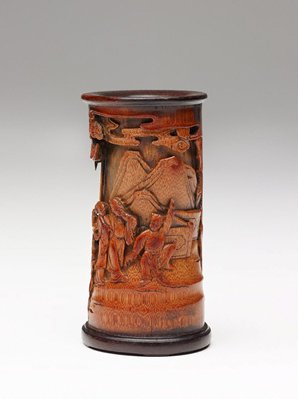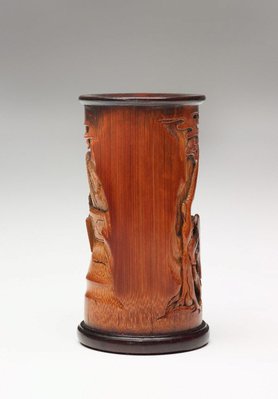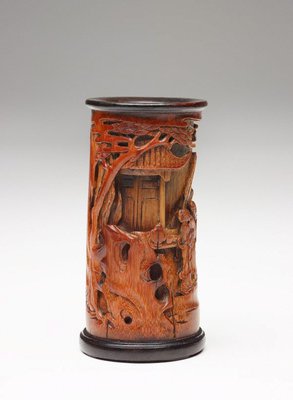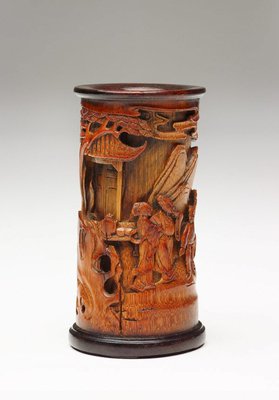




-
Details
- Place where the work was made
-
China
- Date
- 18th century-19th century
- Media category
- Woodwork
- Materials used
- bamboo
- Dimensions
- 13.2 x 6.5 cm
- Credit
- Gift of John Yu, in memory of George Soutter 2012. Donated through the Australian Government Cultural Gifts Program.
- Location
- Not on display
- Accession number
- 147.2012
- Copyright
- Share
-
-
About
The scene depicted here reminds one of the story of ‘Xi Cai Yu Qin’ (Pleasing parents) in the Book of Twenty-four [examples] of Filial Piety. According to the story, Lao Lai Zi who lived during the Spring-Autumn and Warring States period (770-221 BCE) was a model son who always showed due respect to his parents. He would dress as a boy and behave like a child even when he was in his seventies in order to make his parents laugh.
Asian Art Department, AGNSW, June 2012
Bamboo Carving:
The earliest mention of a bamboo brush pot in literature appears during the Song dynasty (960-1127). Zhu Yizun of the Ming dynasty (1368-1644) wrote in his 'Bi Tong Ming' ('On Brush Pot'): “Brushes that lie on the desk randomly are like people who don’t have proper deportment. When they are put in a brush pot, like guests finding a home, they become proper.”Starting from the late Ming dynasty, the literati of the day stressed the cultivation of 'ya' (elegant, refined distinguished) style in their life. This style was expressed in their studies, carved bamboo ornaments, including brush pots ('bitong'), arm rests ('bige') and incense tubes ('xiangtong'). These were highly sought after because bamboo was considered as one of the four symbols for 'gentleman' whose integrity should be like the sections on bamboo trunks that go higher and higher.
The art of bamboo carving, probably started as early as the Tang dynasty, and became a unique art form. At its apogee in the early Qing dynasty (1644-1911), bamboo carving eclipsed all other similar forms of art and craft.
-
Places
Where the work was made
China
-
Exhibition history
Shown in 1 exhibition
Beyond Words: Calligraphic Traditions of Asia, Art Gallery of New South Wales, Sydney, 27 Aug 2016–30 Apr 2017
